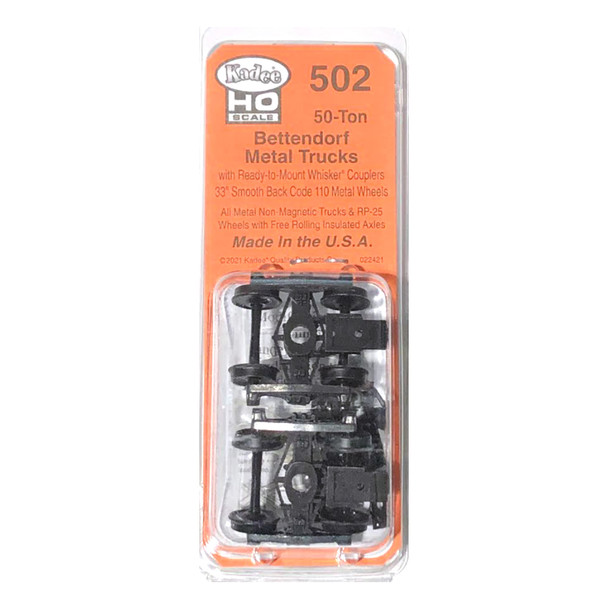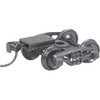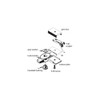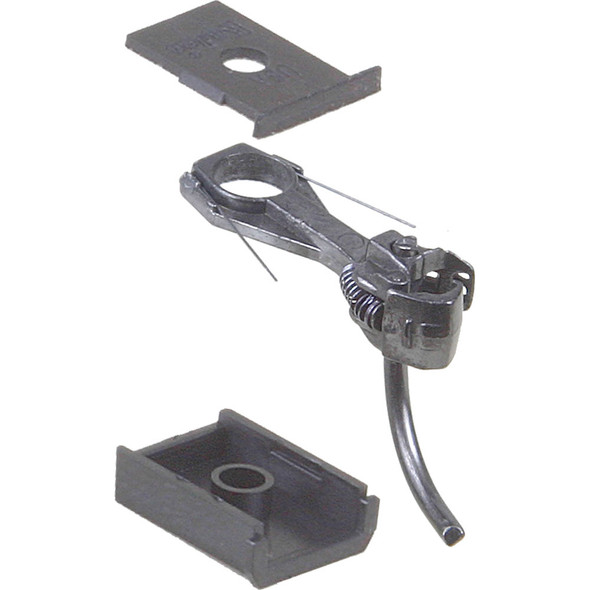Kadee
Kadee 502 Bettendorf Metal Trucks w/ Ready-To-Mount Whisker Couplers : HO Scale
- SKU:
- KAD502
- UPC:
- 765484005025
- Condition:
- New
Frequently bought together:
Description
Package Includes:
(2) Each #502 Bettendorf 50-ton Trucks with Coupler Platform (assembled)
(2) Each #148 Metal Whisker® Couplers
(2) Each Coupler Gearbox
(2) Each 0-48 Screw
(2) Each Insulated Bushing
(2) Each #209 Gray Insulating Fiber Washers .010"
(2) #622 Knuckle Springs
**Screws not included
The Whisker® couplers will need to be assembled on to the trucks coupler bottom plate.
Mounts with a #2 or 2-56 screw. **Mounting Screws not Included.
The Bettendorf Double Truss Truck was introduced in the 1930's by U.S. railroads and was allowed to be used in interchange service through 1993. The Kadee® #500, #502 & #550 represent 50- ton trucks for 100,000 pound cars.
Metal Fully Sprung Trucks Features:
Ready-To-Mount #148 Metal Whisker® Couplers
Code 110 (.110) #520 33" Smooth Back Wheels
Accurate Markings
Incredible Detail True to Prototype
Non-Magnetic Metal Wheels
Highly Flexible Sprung Trucks
Metal Sideframes & Fully Sprung Bolster
Smooth tracking Free Rolling Contoured Insulated Axles
RP-25 Free Rrolling Wheels
#637 HO Scale Truck Springs
The term Code 110 and Code 88 relates to the width of the wheels and has no relationship to track code. Code 110 wheels are .110" wide and Code 88 are .088" wide. Code 110 wheels are the common (or "Standard") width wheels and Code 88 are what is called "Semi-Scale" and are used when the modeler wants a more prototypical looking wheel width. Actual HO-Scale prototypical wheel width would be around .067" wide and although they will run OK on the average track they will not go through common turnouts and crossings. Code 88 (.088") is just about the minimum width of wheel that will run on most standard or common track if gauged correctly. It really is a matter of appearances because there's very little operational differences between running Code 110 or Code 88 wheels. Code 88 wheels look really good and are most noticeable on open frame cars like hoppers and tank cars. However, they also look great on boxcars, gondolas, and reefers but not quite as noticeable. As mentioned above track code and wheel code have no relationship meaning Code 110 and Code 88 will run on most any code of track. Track code is simply the measured height of the rail, code 100 is .100" tall, code 83 is .083" tall, code 70 is .070" tall, and so on.
View AllClose
(2) Each #502 Bettendorf 50-ton Trucks with Coupler Platform (assembled)
(2) Each #148 Metal Whisker® Couplers
(2) Each Coupler Gearbox
(2) Each 0-48 Screw
(2) Each Insulated Bushing
(2) Each #209 Gray Insulating Fiber Washers .010"
(2) #622 Knuckle Springs
**Screws not included
The Whisker® couplers will need to be assembled on to the trucks coupler bottom plate.
Mounts with a #2 or 2-56 screw. **Mounting Screws not Included.
The Bettendorf Double Truss Truck was introduced in the 1930's by U.S. railroads and was allowed to be used in interchange service through 1993. The Kadee® #500, #502 & #550 represent 50- ton trucks for 100,000 pound cars.
Metal Fully Sprung Trucks Features:
Ready-To-Mount #148 Metal Whisker® Couplers
Code 110 (.110) #520 33" Smooth Back Wheels
Accurate Markings
Incredible Detail True to Prototype
Non-Magnetic Metal Wheels
Highly Flexible Sprung Trucks
Metal Sideframes & Fully Sprung Bolster
Smooth tracking Free Rolling Contoured Insulated Axles
RP-25 Free Rrolling Wheels
#637 HO Scale Truck Springs
The term Code 110 and Code 88 relates to the width of the wheels and has no relationship to track code. Code 110 wheels are .110" wide and Code 88 are .088" wide. Code 110 wheels are the common (or "Standard") width wheels and Code 88 are what is called "Semi-Scale" and are used when the modeler wants a more prototypical looking wheel width. Actual HO-Scale prototypical wheel width would be around .067" wide and although they will run OK on the average track they will not go through common turnouts and crossings. Code 88 (.088") is just about the minimum width of wheel that will run on most standard or common track if gauged correctly. It really is a matter of appearances because there's very little operational differences between running Code 110 or Code 88 wheels. Code 88 wheels look really good and are most noticeable on open frame cars like hoppers and tank cars. However, they also look great on boxcars, gondolas, and reefers but not quite as noticeable. As mentioned above track code and wheel code have no relationship meaning Code 110 and Code 88 will run on most any code of track. Track code is simply the measured height of the rail, code 100 is .100" tall, code 83 is .083" tall, code 70 is .070" tall, and so on.















